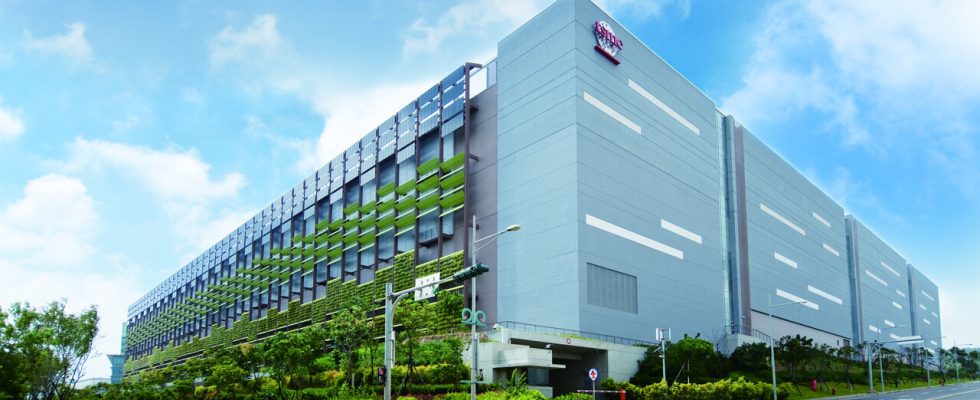It took a long time, now it’s official: TSMC will build a fab in Dresden, over ten billion euros have been set. NXP, Bosch and Infineon are on board, the factory will offer manufacturing processes from 28/22 nm down to 16/12 nm and will expose 40,000 wafers per month at the beginning of 2027.
Not under TSMC, but ESMC – which stands for European Semiconductor Manufacturing Company – the new campus will run as a cooperation. TSMC retains the majority with 70 percent, NXP, Bosch and Infineon each get ten percent. TSMC will therefore also operate the factory. In the end, the blueprint from Japan, where TSMC operates a factory together with Sony and Denso in very similar circumstances, made the decision. It was originally said that TSMC didn’t want to do something like this again – but apparently it works better than expected. The parallels go very far.
When it comes to manufacturing technology, we focus on what customers in Europe and the surrounding area need most. It’s not the oldest, but it’s also not the very latest from the technology department. With 28 and 22 nm in planar processes and 16 to 12 nm for FinFET solutions, however, an extremely large market is covered, here you simply play it safe – just like in Japan. With 40,000 wafer starts per month, the fab also corresponds to a classic TSMC phase, as the expansion stages are always called.
More than ten billion euros in the immediate vicinity of Bosch
The budget is “over” ten billion euros. Most recently, it was said that the German state would contribute up to five billion euros, and TSMC confirmed through the supervisory board that they would invest almost 3.5 billion euros. Mathematically, the ten percent each of NXP, Bosch and Infineon would have to mean an investment of around 500 million euros. If the information turns out to be correct, the funding rate would be higher than at the Intel factory in Magdeburg.
In the end, 2,000 direct jobs are to be created in this way, and many more are expected in the supplier environment. The location of Dresden’s Lord Mayor is currently “North of Dresden”. respectively the “Dresdner Airport Park”, it had previously been assumed that the new factory could be built near the Bosch plant. Statements by Bosch CEO Dr. Stefan Hartung regarding a “close proximity to our semiconductor plant in Dresden‘ support this. It should be according to local media A 50-hectare site originally acquired by the cigarette manufacturer Philip Morris for the production of e-cigarettes and TSMC bought from it.
Saxony itself wants to spend hundreds of millions to develop the area. First and foremost, the expansion of the infrastructure is planned, above all the energy and water supply, but also a training center for the chip industry. TSMC currently sees that there could be a shortage of skilled workers when expanding the factory in the US factory construction in Arizona.
But it’s not just politics that counts among the well-wishers. Competitor Intel, which also wants to start as a foundry with its fab in Germany in 2027, sees many positive things for the entire region and Europe in the settlement and thus joins the ranks that Robert Habeck explained.
With the EU’s goal of returning 20% of global semiconductor manufacturing capacity to Europe by 2030, it is critical that the industry prioritize investments in the region. We applaud TSMC, Bosch, Infineon and NXP for joining Intel in making the investments needed to create a resilient and sustainable global supply chain.
intel

